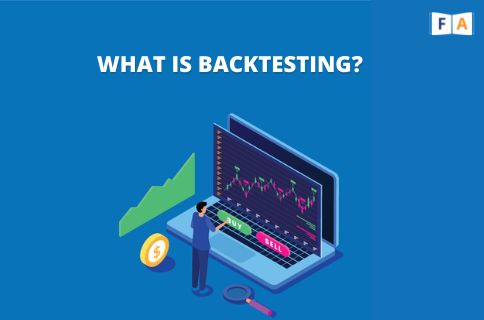
What is Backtesting?
Backtesting is regarded as a crucial weapon in a trader’s arsenal. Traders would not risk their money in the financial markets if they didn’t do backtesting. Consider this: before purchasing anything, whether it’s a phone or a car, you’d want to research the brand’s history, features, and so on. You determine whether it is worth your money. Trading follows the same idea, and backtesting can help you with it.
What is the significance of backtesting?
Do you realise that the majority of market traders lose money? They don’t lose money because they don’t comprehend the market. However, this is due to the fact that their trading judgments are not founded on solid research and tried and true trading strategies. They make judgments based on their emotions and the advice of friends, and they take unnecessary risks in the hopes of becoming wealthy rapidly. If they separate their emotions and instincts from trading and backtest their ideas before trading, they will have a better chance of trading well in the market.
What is backtesting and how does it work?
The practice of evaluating a trading hypothesis/strategy on previous data is known as backtesting. Assume you’ve come up with a theory. This hypothesis suggests that securities that have produced positive returns in the previous year are likely to do so in the coming month. How would you put this theory to the test? How would you know whether the plan will be successful in the market?
You may backtest your hypothesis using past data to verify whether it is correct. It aids in determining the viability of a trading strategy by examining how it performs on historical data.
You will be confident to trade using your method if you backtest it on previous data and it delivers you solid results. You will dismiss or re-evaluate the hypothesis if the approach performs badly on historical data.
Backtesting logic/hypothesis trading?
You’ve chosen to backtest a trading technique, but first, you need to have a clear picture of what you’re going to backtest in your head. This backtest’s trading logic or hypothesis is as follows.
You compute the historical one-year returns of securities and determine whether they are positive or negative in the example above. If the answer is yes, you should look at the stocks’ prospective one-month returns. You will do nothing if you are pessimistic. Only when you understand the trade rationale can you backtest the trading strategy, hence this is the most important phase in backtesting.
Choosing the appropriate market or asset sector
There are a number of elements to consider when deciding which market or assets are suitable for the type of trading you want to do. Risks you’re prepared to face, earnings you’re hoping to make, and the amount of time you’ll be investing, whether long-term or short-term, are all aspects to consider. Cryptocurrency trading, for example, is riskier than other asset classes but can provide bigger rewards, and vice versa. As a result, picking the correct market and asset class to trade in is critical.
Backtesting information
After you’ve narrowed down your asset list, you’ll want to backtest your trading technique. The next step is to select the asset’s historical data. The data might be obtained from a data vendor or your broker. It is critical to choose high-quality data, that is, data that is free of mistakes. If you use low-quality data, the backtesting result analysis will be inaccurate and deceptive.
What should the backtesting timeframe for a trading strategy be?
Backtesting time is determined by the average holding period of your position. It is preferable to utilise a long time of period, preferably 15 years, if you are trading a technique with a holding period of more than a month. If you’re developing an Intraday approach, 10 years is a good time frame.
When backtesting a trading strategy, how many stocks should be used?
This question has no definitive answer. However, the approach involves a diverse group of companies from several industries. This is because if you simply maintain stocks from a single industry, such as technology, you will be unable to diversify your portfolio. Your strategy will be doomed in instances like the dot-com bubble. If you have a Well-Diversified Portfolio, you can avoid such scenarios.
Conclusion
Backtesting is one of the most valuable features of Algorithmic Trading since it allows us to test our trading methods before putting them into action in the real world. We have discussed all of the things that one should be aware of before beginning backtesting in this blog.





